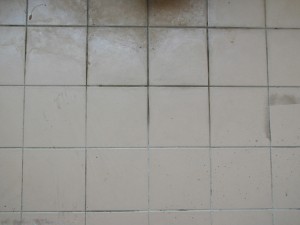Mould Protecting Your Bathroom
This entry was posted on Feb 6, 2014 by speedy-bedTake a look in your bathroom – does it look grubby? If the grouting between your tiles is discoloured and the area around your taps is discoloured then you may be suffering from a case of mould or mildew.
You’re a clean person though so how is there mould in your bathroom? Find out here.
Why Have I Got Mould?
Mould is a fungus that grows in multicellular filaments called hyphae and is transferred in tiny spores that are invisible to the naked eye.
Mould grows when mould spores land on wet surfaces. Mould needs water to survive and this is why it is common in bathrooms and kitchens more than any other area in the home. Mould may be found on tiles near a shower, around taps or on shower curtains where water has collected to form pools.
Why is Mould a Bad Thing?
Well, apart from not looking great, mould can be bad for your health. If you suffer from allergies then it may be a particular problem as mould can produce allergens or irritants which will agitate your allergy. Mould can cause a reaction among those who are allergic, with hay fever-like symptoms such as sneezing, watery eyes or a skin rash.
Mould may also cause asthma attacks and can give those who are not allergic reactions too. In rare occasions where there is exposure to mould over long periods of time mould may cause a cough, headaches and even fungal infections.
How do I Get Rid of Mould?
Reducing mould and mildew is easy if you know how; there are a number of different ways of removing it. One of the most basic cleaning agents is good old fashioned soap and water. Mix in a little baking soda for some added oomph and scrub with a brush.
You could also place white vinegar into a spray bottle and apply it directly to the mould. Vinegar is an acid and when neat will make an area inhospitable to mould. Leave the vinegar sit for around an hour before scrubbing. You could also use ammonia or bleach as cleaning agents but make sure not to mix these as they can produce hazardous fumes.
If you cannot get rid of the mould then replace the caulk or grout. This is easy to do and will leave your bathroom looking new again.
How to Prevent Mould?
If you can control the moisture then mould will not form so keep your bathroom well ventilated and make sure to dry down surfaces after you have a bath or shower. Alternatively you could fit plastic wall cladding panels instead of tiles. These are waterproof and do not need grouting and therefore the chance of getting mould is unlikely.
Clean your shower curtain down on a regular basis. Yes this may sound strange but shower curtains are a breeding ground for mould. A disinfectant product will keep them clean and mould free; or launder them every few weeks to keep them fresh.
You may also grow mould around your windows thanks to condensation. If your windows are steamed or have drips running down them after you have a bath or shower then give them a wipe down. A quick once over with an anti-bacterial wipe every few weeks should do the job.
Are you running off to the shops now to get those cleaning ingredients? Take a look at our cleaning products first – you may save yourself some money!

